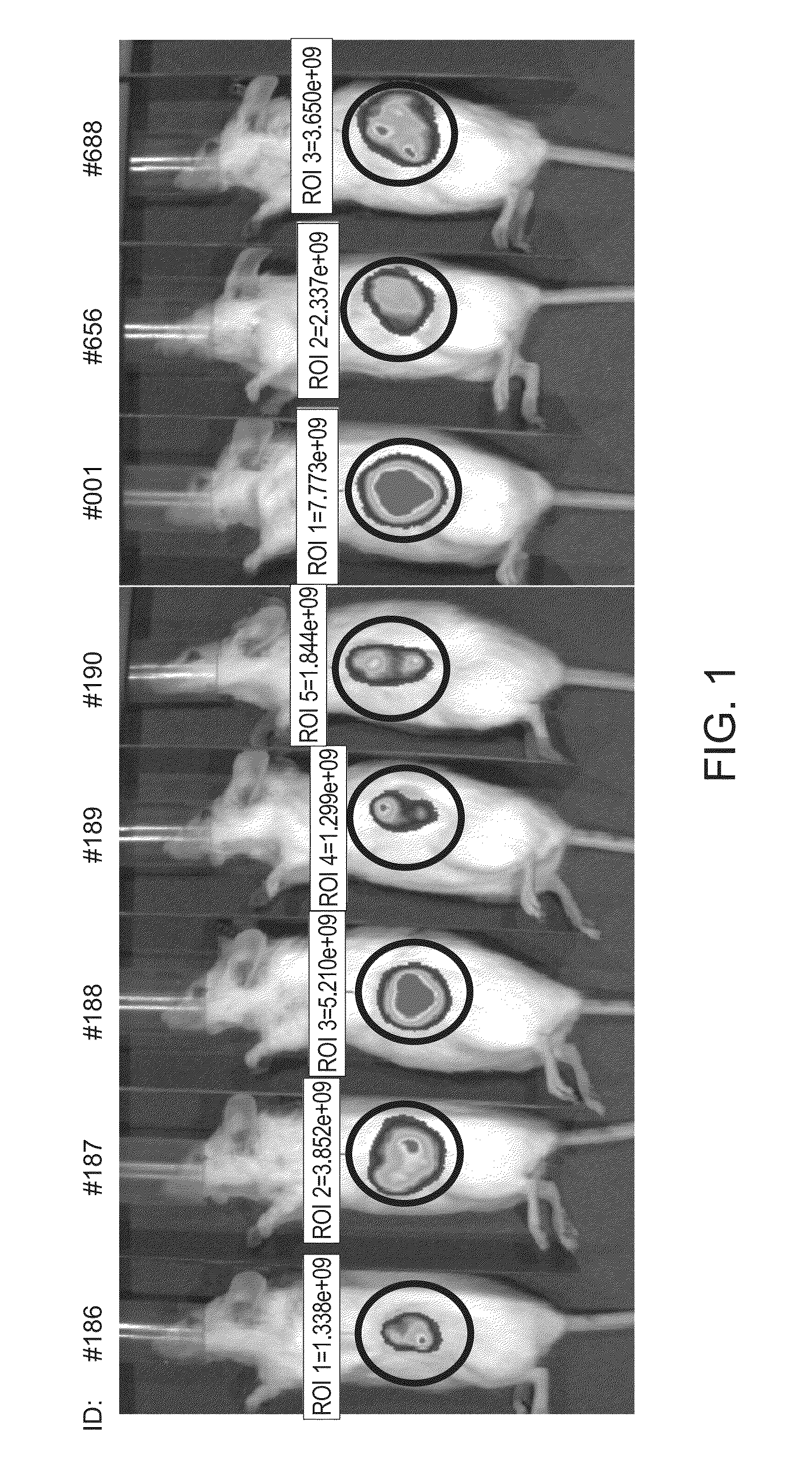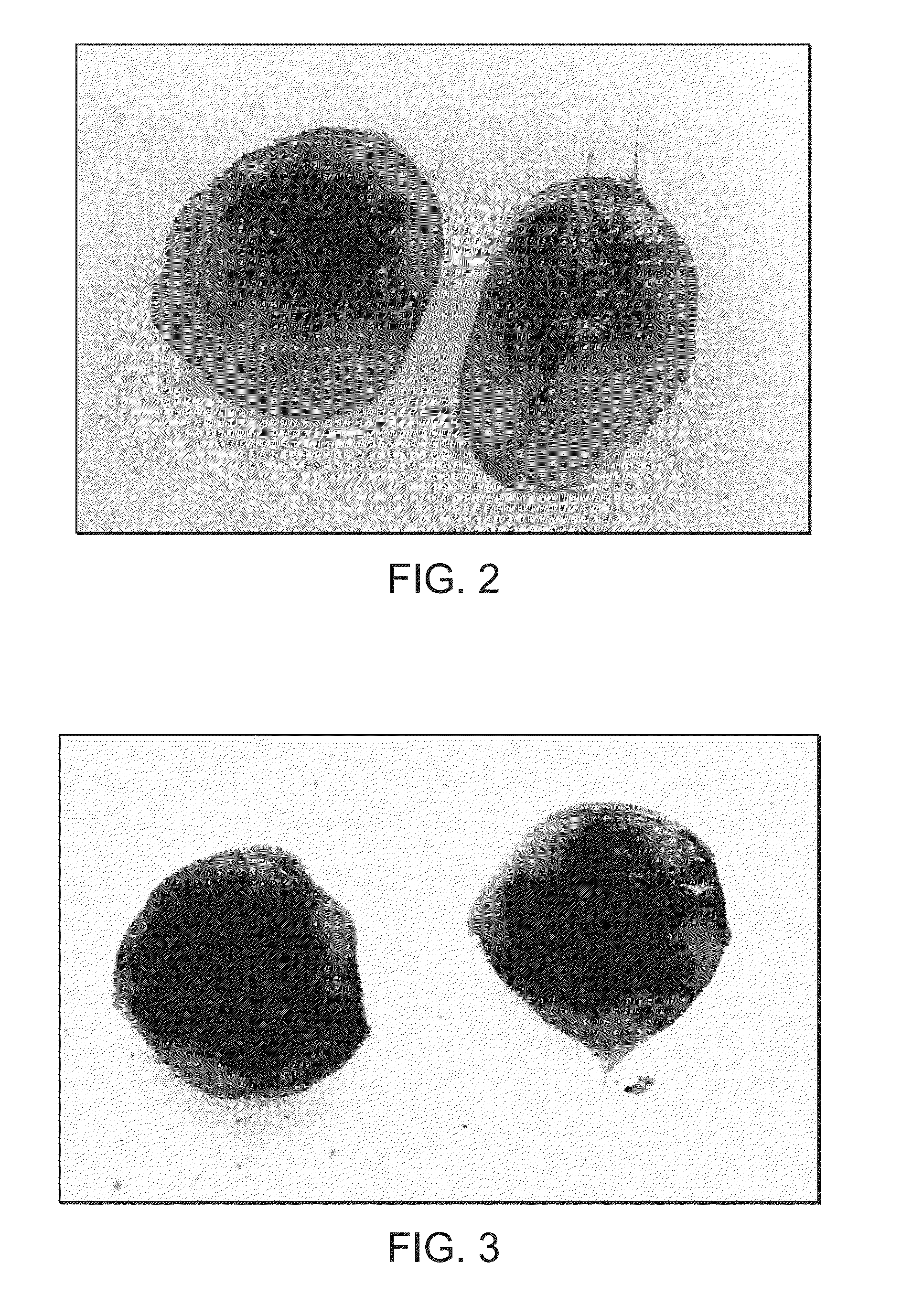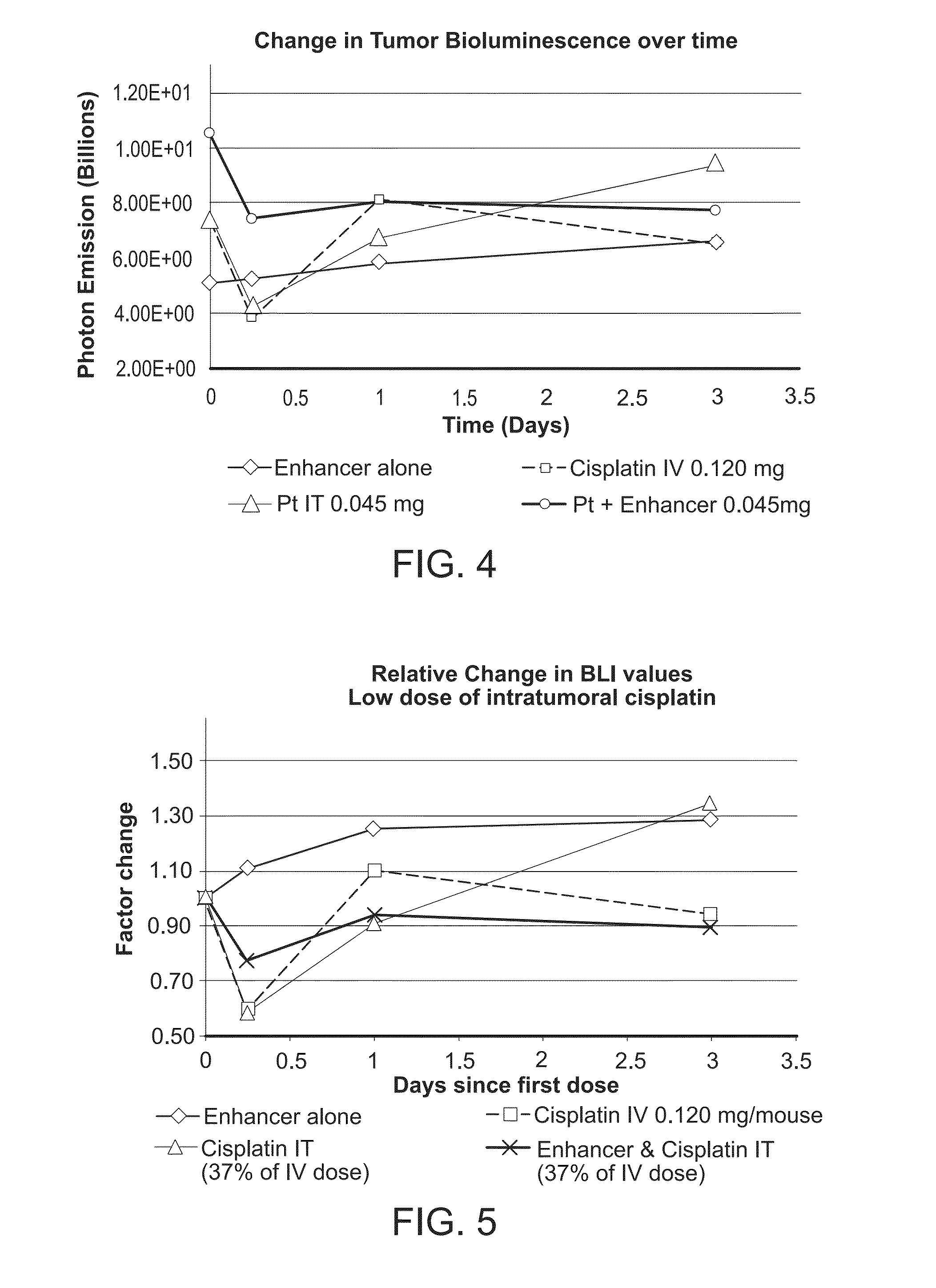Method of treating cancer
a cancer and cancer technology, applied in the field of new cancer treatments, can solve the problems of substantial increase in the drug permeability of the therapeutic agent into the tumor cells, and achieve the effects of reducing tumor growth, preventing tumor metastasis, and shrinking tumors
- Summary
- Abstract
- Description
- Claims
- Application Information
AI Technical Summary
Benefits of technology
Problems solved by technology
Method used
Image
Examples
example 1
[0304]Preparation of dosing solution 1: 167 mg of NaOH were dissolved into 20 ML of de-ionized water to create a sodium hydroxide solution of 0.21 molar. Eighty (80) mgs of 6-Oxo-6-phenylhexanoic acid (obtained from Rieke Metals, Lincoln Nebr.) were weighed out and dissolved into 2 ML of the 0.21 Normal sodium hydroxide solution. In a separate container 6.2 mg of cis-Diaminodichloroplatinum (obtained from Tocris Bioscience, Elisville MO) were dissolved into 2.5ML of de-ionized water. Each material was vortexed for 1 minute and sonicated for 15 minutes. 1.25ML of the 6-Oxo-6-phenylhexanoic solution were mixed with the 2.5ML cis-Diaminodichloroplatinum solution and vortexed for 1 minute. The pH of the resulting clear solution was measured and found to be approximately 5.5. Twenty (20) microliters of 1N sodium hydroxide was added to the combined solution. The pH was measured and found to be approximately 6.8. The volume was adjusted to 5ML by the addition of approximately 1.2ML of deio...
example 2
[0305]Preparation of dosing solution 2: Eighty (80) mgs of 6-Oxo-6-phenylhexanoic acid (obtained from Rieke Metals, Lincoln Nebr.) were weighed out and dissolved into 2 ML of the 0.21 Normal sodium hydroxide solution as described in example 1. In a separate container 20 mg cis-Diammine(1,1-cyclobutanedicarboxylato) platinum (Sigma Aldrich C2538) were dissolved into 2.5ML of de-ionized water. Each material was vortexed for 1 minute and sonicated for 15 minutes. 1.25 MLs of the 6-Oxo-6-phenylhexanoic solution were mixed with the 2.5ML cis-Diammine(1,1-cyclobutanedicarboxylato) platinum solution and vortexed for 1 minute. The pH of the resulting clear combined solution was measured and found to be approximately 6.0. Ten (10) microliters of 1N sodium hydroxide was added to the combined solution. The pH was measured and found to be approximately 6.9. The volume was adjusted to 5ML by the addition of approximately 1.2ML of deionized water.
example 3
[0306]Preparation of dosing solution 3: 137 mg of NaOH were dissolved into 20 ML of de-ionized water to create a sodium hydroxide solution of 0.16 molar. Eighty (80) microliters of 2-ethylhexyl 2-hydroxybenzoate (obtained from ChemPacific, Baltimore Md.) were weighed out and mixed with 2 ML of the 0.16 Normal sodium hydroxide solution. In a separate container 6.2 mg of cis-Diaminodichloroplatinum (obtained from Tocris Bioscience, Elisville Mo.) were dissolved into 2.5ML of de-ionized water. Each material was vortexed for 1 minute and sonicated for 15 minutes. 1.25ML of the 2-ethylhexyl 2-hydroxybenzoate solution were mixed with the 2.5ML cis-Diaminodichloroplatinum solution and vortexed for 1 minute. The pH of the resulting clear solution was measured and found to be approximately 11. Several titrations using 50% HCl solution and 2N sodium hydroxide solution were added to the combined solution. After several titrations the pH was measured and found to be approximately 6.8.
PUM
| Property | Measurement | Unit |
|---|---|---|
| shrinkage | aaaaa | aaaaa |
| shrinkage | aaaaa | aaaaa |
| shrinkage | aaaaa | aaaaa |
Abstract
Description
Claims
Application Information
 Login to View More
Login to View More - R&D
- Intellectual Property
- Life Sciences
- Materials
- Tech Scout
- Unparalleled Data Quality
- Higher Quality Content
- 60% Fewer Hallucinations
Browse by: Latest US Patents, China's latest patents, Technical Efficacy Thesaurus, Application Domain, Technology Topic, Popular Technical Reports.
© 2025 PatSnap. All rights reserved.Legal|Privacy policy|Modern Slavery Act Transparency Statement|Sitemap|About US| Contact US: help@patsnap.com



